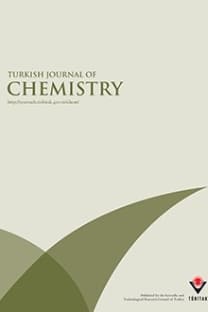Antifungal natural products from medicinal plants of Pakistan
Antifungal natural products from medicinal plants of Pakistan
___
- 1. W. Dymock, “Pharmacographia Indica”, republished by the Institute of Health and Tibbi Research under the auspices of Hamdard National Foundation, Pakistan, / 69, (1972).
- 2. W.D. Macrae, and G.H.N. Towers, Phytochemistry, 23, 1207 (1984).
- 3. B.F. Issel, F.M. Muggia, S.K. Carter, Etoposide (VP-16)-Current Status and New Development, Academic Press, Orlando (J984).
- 4. J.D. Paxton, in “Methods in Plant Biochemistry”, vol. 6, pp. 33; Academic Press, London (1991).
- 5. S.A. Beers, Y. Imakura, H.J. Dai, D.H. Li, Y.C. Cheng, and K.H. Lee, 3. Nat. Prod., 51, 901 (1988).
- 6. M. Tanoguchi, M. Arimoto, H. Saiki, and H. Yamaguchi, Chem. Pharm. Bull., 35, 4162 (1987).
- 7. D.M. Doddrell, D.T. Pegg, and M.R. Bendall, S. Magn. Res., 48, 323 (1982).
- 8. A. Bax, and S. Subramanian, 3. Magn. Res., 67, 565 (1986).
- 9. A. Bax, and M.F. Summers, 3. Am. Chem. Soc., 108, 2093 (1986).
- 10. W.J. Gensler, F. Johnson, and A.D.B. Sloan, 3. Am. Chem. Soc., 82, 6074 (1960).
- 11. P.M. Dewick, and D.E. Jackson, Phytochemistry, 20, 2277 (1981).
- 12. Atta-urRahman, “One- and Two-Dimensional NMR Spectroscopy” Elsevier Science Publishers, Amsterdam, 269 (1989).
- 13. L. Braunshweiler, and R.R. Ernst, J. Magn. Res., 53, 521 (1983).
- 14. Atta-ur-Rahman, “Handbook of Natural Products Data, Diterpenoid and Steroidal Alkaloids”, Elsevier Science Publishers, Amsterdam (1990).
- 15. S.S. Bhatnager, “The Wealth of India”, C. S. I. R., New Delhi, India (1952).
- 16. R. Siddiqui, S. Kazmi, and S. Shc'khani, “Abstracts of the Annual Meetings of the American Society for Microbiology”, 90, 384 (1990).
- 17. A.B. Khan, S. Mol. Cell. Card., 21, S171 (1989).
- 18. R. Carran, A. Maran, J.M. Mentero, L. Fernandozlago, and A. Domingnez, Plants Medicinnales Phytother- apie, 21, 195 (1987); 21, 195 (1987).
- 19. A, Bax, i5. Mag., Reson., 53, 517 (1984).
- 20. R.G. Sheldrick, “SHELXTL PLUS, Structure Solving Package”, Nicolet (now Siemens), Madison (1986).
- 21. Archival crystallographic data have been deposited with teh Cambridge Crystallographic Data Center, Univer- sity Chemical Laboratory, Lensfield Road, Cambridge CB2 1 EW, U. K.
- 22. K.N. Gaind, and R.D. Budhiraja, Ind. 3• Pharm., 29, 185 (1967).
- 23. R.D. Budhiraja, S. Sindhi, and K.N. Gaind, Ind. 3. Physiol Pharmacol., Z7, 129 (1983).
- 24. Atta-ur-Rahman, S. Abbas, Dure-e-Shahwar, S.A. Jamal, and M.I. Choudhary, il. Nat. Prod., 56, 1000 (1983).
- 25. S.M. Kupchan, W.K. Anderson, P. Bollinger, R.W. Doskotch, and R.M. Smith, J. Org. Chem., 34, 3858 (1969).
- 26 V. Van de Velde, D. Lavie, R.O. Budhiraja, S. Sudhir, and K.N. Grag, Phytochemistry, 22, 2253 (1983).
- ISSN: 1300-0527
- Yayın Aralığı: 6
- Yayıncı: TÜBİTAK
Analytical applications of organic conducting polymer electrodes
Nada F. ATTA, Z. WANG, E. KARAGÖZLER, George C. RUSSELL, N. AKMAL, J.F. RUBINSON, S.K. LUNSFORD, O.Y. ATAMAN, H. ZİMMER, H.B. MARK, Ahmed GALAL
Reduction of combustion generated pollution:Process modifications and energy efficient power cycles
Synthesis and characterization of conducting polymers and their composites
Antifungal natural products from medicinal plants of Pakistan
Atta-ur RAHMAN, M.Iqbal CHOUDHARY
Dissociation dynamics of small carbon clusters
Novel architectures of macromolecular systems
A computational study on the conformational behaviour of 1,1,2- trihydroxyethane in solution
